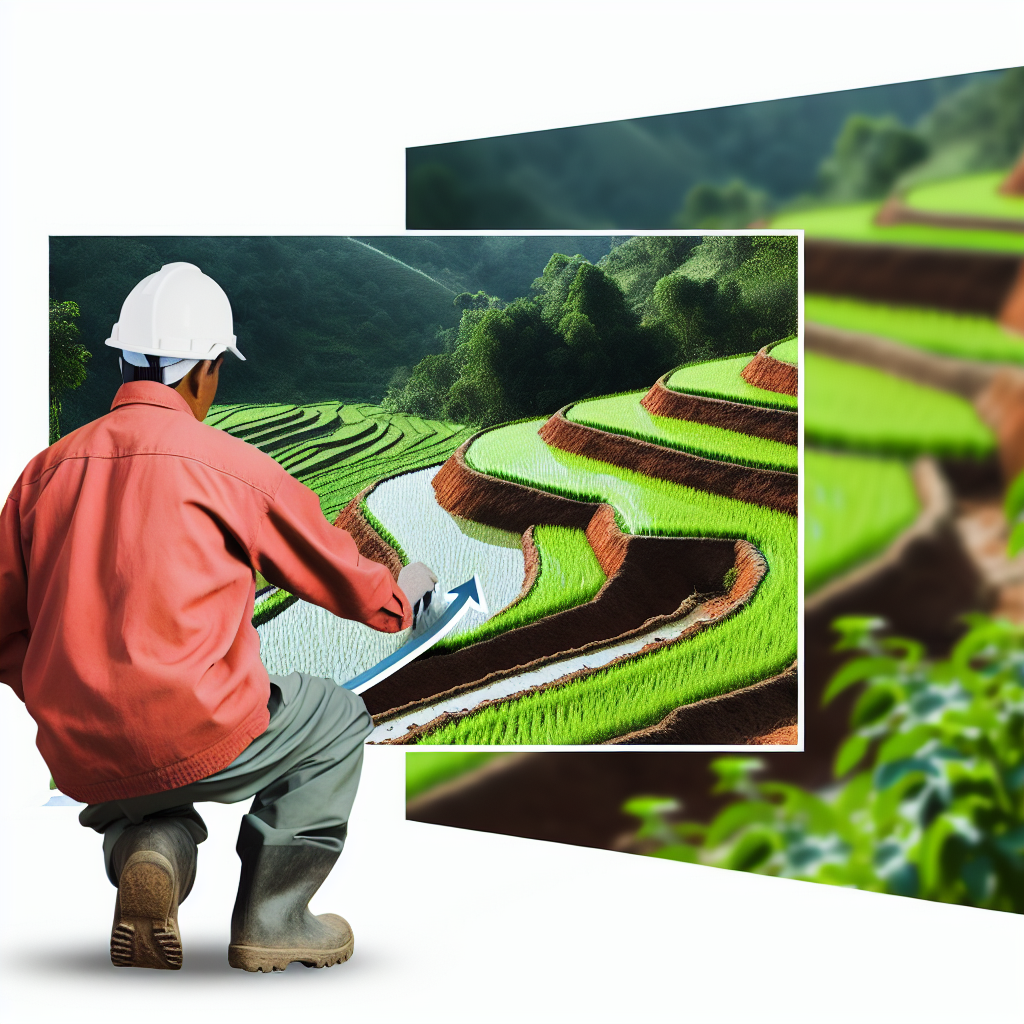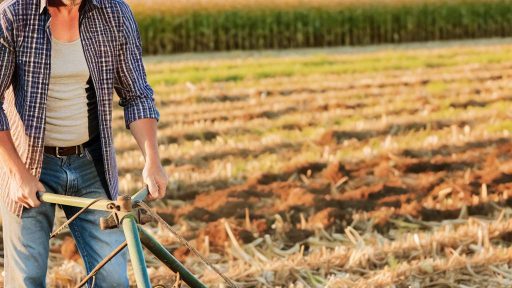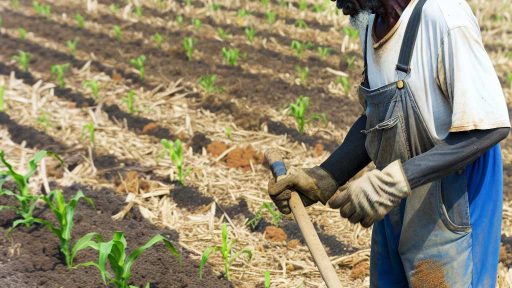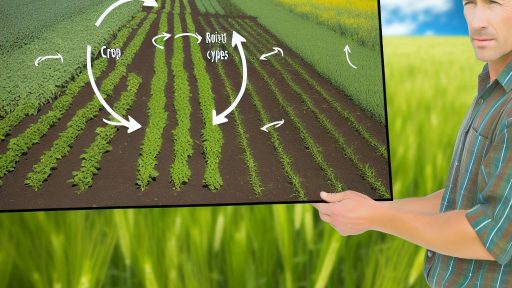Introduction to Terracing
Terracing is an age-old agricultural technique that transforms steep slopes into flat areas.
This method is critical for water conservation in farming practices.
It helps to slow down water runoff during heavy rains.
As a result, terraces improve water infiltration into the soil.
This practice mitigates soil erosion and enhances crop productivity.
Farmers around the world implement terracing to maximize agricultural productivity.
Moreover, terracing can support sustainable farming practices on slopes.
Significance of Terracing in Agriculture
Terracing offers many benefits to slope farming.
Firstly, it reduces water waste significantly.
Secondly, it increases soil moisture retention.
Farmers can cultivate crops more efficiently this way.
Additionally, terraces can provide a variety of microclimates for different crops.
This diversity enhances biodiversity and stabilizes the local ecosystem.
Overall, terracing plays a vital role in sustainable agriculture.
Key Techniques in Terracing
Implementing effective terracing requires specific techniques.
Transform Your Agribusiness
Unlock your farm's potential with expert advice tailored to your needs. Get actionable steps that drive real results.
Get StartedContour farming is one such technique that aligns crops with the contours of the land.
Another technique is the use of check dams to retain water.
Moreover, creating wide terraces can enable easier farming access.
These practices ensure long-term productivity and soil health.
Collaborating with local experts can enhance terracing effectiveness.
Ultimately, the right technique can maximize the benefits of terracing.
Overview of Water Conservation Challenges in Sloped Areas
Water conservation presents unique challenges in sloped areas.
Many regions face rapid runoff, leading to soil erosion.
This runoff quickly washes away valuable topsoil.
Moreover, sloped terrain makes water retention difficult.
As a result, plants struggle to access sufficient moisture.
Climate change exacerbates these issues, increasing precipitation variability.
In heavy rains, steep slopes can lead to flooding.
This flooding worsens erosion and damages local ecosystems.
Farmers often face reduced crop yields in these conditions.
Consequently, they must find effective strategies to manage water.
Without intervention, these challenges may escalate.
Implementing sustainable methods becomes essential for success.
Terracing provides a viable solution for improving water conservation.
By creating flat areas on slopes, terracing slows water flow.
This method enhances water infiltration into the soil.
Consequently, it reduces runoff and supports plant growth.
Moreover, terracing can prevent soil erosion over time.
Thus, communities should explore this practice for sustainable agriculture.
Showcase Your Farming Business
Publish your professional farming services profile on our blog for a one-time fee of $200 and reach a dedicated audience of farmers and agribusiness owners.
Publish Your ProfileHistory and Evolution of Terracing Practices Worldwide
Terracing has a rich and varied history worldwide.
Many ancient civilizations relied on terracing for agriculture.
In Peru, the Incas developed extensive terraced fields in the Andes Mountains.
This innovation allowed them to cultivate crops in steep terrains.
In Asia, especially in China, farmers implemented terracing over two thousand years ago.
Rice paddies, supported by terraces, formed a critical part of their agricultural practices.
Terracing also emerged in Europe during the Middle Ages.
Farmers on the slopes of the Alps constructed stone walls to create farmable land.
This helped prevent soil erosion and retained valuable moisture.
In Africa, the Tigray region showcases ancient terracing methods still in use today.
Local farmers adapted terracing techniques to suit their arid environment.
They recognized the importance of conserving water in harsh climates.
As populations grew, terracing practices evolved to meet food demands.
Modern technology now complements traditional methods.
For instance, GPS technology assists in planning effective terracing layouts.
Additionally, environmental concerns have sparked renewed interest in these practices.
Today, terracing contributes significantly to sustainable agriculture.
It helps manage water runoff and promotes biodiversity in farming systems.
Countries continue to explore terracing as a viable method for water conservation.
As global warming challenges traditional farming, innovative approaches emerge.
Terracing stands out as a resilient and time-tested solution globally.
Learn More: Permaculture Farm Planning Strategies For Optimal Yield
Types of Terracing
Bench Terraces
Bench terraces are wide flat areas constructed on a slope.
These terraces reduce soil erosion significantly.
They allow water to maintain its moisture, benefiting crops.
Farmers often use bench terraces in hilly regions.
This technique works well for crops that require deep roots.
Contour Terraces
Contour terraces follow the natural contours of the land.
This method helps slow down water runoff effectively.
It also captures and retains water in the soil.
Contour terraces work best in areas with consistent rainfall.
Farmers benefit from this method when growing diverse crops.
Suitability of Terraces
The suitability of terraces depends on several factors.
These include soil type, climate, and crop requirements.
For instance, bench terraces suit deep-rooted crops best.
Conversely, contour terraces adapt well to variable rainfall.
Farmers should assess their land before choosing a method.
Implementation Considerations
Implementing either terrace type requires careful planning.
Farmers need to consider labor and resources available.
Additionally, they should evaluate ongoing maintenance needs.
Showcase Your Farming Business
Publish your professional farming services profile on our blog for a one-time fee of $200 and reach a dedicated audience of farmers and agribusiness owners.
Publish Your ProfileUsing local materials can reduce implementation costs.
Farmers can also consult experts for best practices.
Learn More: Enhancing Pest Control through Crop Rotation Methods
Benefits of Terracing for Water Management and Soil Erosion Control
Effective Water Management
Terracing significantly enhances water management on slopes.
It reduces surface runoff, allowing water to infiltrate the soil.
This process helps maintain soil moisture for crops.
Moreover, terraces capture rainwater effectively.
This captured water is crucial for crop growth.
Additionally, terracing slows down water flow during storms.
This reduces the risk of flooding in agricultural areas.
Farmers can thus maximize water efficiency across their lands.
Importantly, effective water management increases agricultural yields.
Soil Erosion Control
Terracing plays a vital role in controlling soil erosion.
By breaking the slope into smaller, flatter sections, it reduces erosion risk.
This design helps retain topsoil, which is nutrient-rich.
Consequently, crops benefit from enhanced soil fertility.
Furthermore, terraces decrease wind erosion by creating barriers.
These barriers protect delicate plants from strong winds.
They also prevent the loss of essential soil components.
This proactive measure is crucial for long-term soil health.
Environmental Advantages
Terracing offers several environmental benefits.
It aids in maintaining biodiversity in agricultural ecosystems.
Sloped areas can sustain various plant species when terraced.
Additionally, terraces can create unique microclimates.
These microclimates support diverse wildlife and pollinators.
As a result, farmers can cultivate crops sustainably.
This sustainable practice reduces dependency on chemical fertilizers.
In turn, it benefits surrounding ecosystems and water bodies.
Find Out More: Organic Waste Solutions for Modern Farmers
Techniques for Constructing Effective Terracing Systems
Understanding the Basics of Terracing
Terracing involves creating flat areas on sloped land.
This minimizes soil erosion and helps retain water.
Farmers have used terracing for centuries as an ancient practice.
Choosing the Right Location
Selecting the right site is crucial for successful terracing.
Start by assessing the slope’s steepness and stability.
Next, evaluate the soil type and drainage patterns.
Suitable locations should have good sunlight exposure.
Designing the Terrace Layout
Plan the terrace dimensions based on the slope’s gradient.
Wider terraces work best on steeper slopes to catch more water.
Incorporate drainage channels between terraces to manage runoff.
Additionally, consider planting grass or shrubs on terrace edges.
Showcase Your Farming Business
Publish your professional farming services profile on our blog for a one-time fee of $200 and reach a dedicated audience of farmers and agribusiness owners.
Publish Your ProfileConstruction Techniques
Begin terracing by marking the desired layout with stakes.
Use shovels or excavators to create flat platforms on the slope.
Ensure each terrace is compacted to withstand erosion.
Install retaining walls using stones or erosion control fabric.
Planting and Maintenance
Choose crops suited to the terrace conditions.
Cover crops can enhance soil health and prevent erosion.
Regularly maintain the terraces by repairing any damage.
Mulching can help retain moisture and suppress weeds.
Monitoring and Adjusting
Regularly observe how the terraces function during rainfall.
Tweak the design if water runoff is excessive or inadequate.
Gather data on crops’ performance for future improvements.
Adapt techniques based on changing environmental conditions.
Gain More Insights: Drip Irrigation Methods for Sustainable Farming

Case Studies of Successful Terracing Projects
Terracing in Peru’s Andes Mountains
In the high-altitude regions of Peru, farmers have effectively implemented terracing.
This method has transformed steep hillsides into arable land.
It reduces soil erosion while maximizing water retention.
For instance, the community of Chinchero uses stone terraces.
These terraces capture rainfall and prevent runoff.
As a result, crop yields have notably increased.
Innovative Approaches in Japan
In Japan, terracing dates back centuries and remains vital today.
Farmers cultivate rice on terraced fields in mountainous regions.
This strategy conserves water and enhances irrigation efficiency.
The techniques have adapted to modern needs with new technologies.
Moreover, local governments actively support terrace restoration.
They promote this practice for environmental sustainability.
Success in East Africa
In East Africa, countries like Ethiopia use terracing for soil conservation.
Farmers build terraces from local materials like earth and stone.
These structures help slow water flow and capture nutrients.
Communities report improved food security thanks to these efforts.
Organizations provide training on effective terracing techniques.
This knowledge transfer enhances local agricultural practices.
Terracing in the Mediterranean Climate
The lush hills of southern Spain showcase effective terracing solutions.
Farmers here grow olives and grapes on steep terraces.
This approach conserves water in a climate known for its dry spells.
Continuous investment in terrace maintenance boosts productivity.
The local economy benefits significantly from this sustainable practice.
Furthermore, it preserves traditional farming techniques.
Potential Drawbacks and Maintenance Requirements of Terrace Farming
Initial Cost Investment
The establishment of terraces can require substantial funding.
Farmers must invest in materials and labor for construction.
Additionally, site preparation can add to the initial costs.
Showcase Your Farming Business
Publish your professional farming services profile on our blog for a one-time fee of $200 and reach a dedicated audience of farmers and agribusiness owners.
Publish Your ProfileThese upfront expenses may deter some farmers from adopting this method.
Soil Erosion Risks
Terracing can lead to soil erosion if not carefully managed.
Over time, improper maintenance may expose soil to the elements.
If terraces are not adequately designed, runoff can become problematic.
Regular Maintenance Requirements
Ongoing upkeep is critical for effective terrace farming.
Farmers must regularly inspect the terraces for structural integrity.
Regular weeding is essential to prevent invasive plant growth.
Furthermore, they need to monitor for soil degradation and repair as necessary.
Labor Intensity
Terrace farming often requires additional labor compared to traditional methods.
This can present challenges for farms with limited workforce availability.
Farmers may need to hire extra help during busy seasons.
Potential Limitations on Crop Choices
Some crops may not thrive in terrace systems.
Farmers must choose plants that are suited for sloped terrains.
This can limit profitability and crop diversity for some producers.
Dependency on Local Climate
The effectiveness of terrace farming is climate-dependent.
In regions with insufficient rainfall, terracing may not provide adequate moisture retention.
Additionally, extreme weather events can impact terrace stability.
Future Prospects: Integrating Modern Technology with Traditional Terracing Methods
Harnessing Advances in Engineering
Modern engineering techniques significantly enhance terracing efficiency.
For instance, using advanced soil stability analysis helps design more effective terraces.
This approach reduces land erosion, improving soil conservation.
Moreover, utilizing geotextiles can stabilize slopes and reduce maintenance needs.
Utilizing Precision Agriculture
Precision agriculture aligns perfectly with terracing practices.
Mapping technologies allow farmers to identify terrain variations accurately.
This data enables tailored approaches for soil and water management.
As a result, farmers can optimize their water conservation efforts on slopes.
Implementing Smart Irrigation Systems
Smart irrigation systems enhance water use efficiency in terraced landscapes.
Sensors monitor soil moisture levels in real-time.
Consequently, they notify farmers when to irrigate their crops.
This minimizes water waste while ensuring proper crop hydration.
Leveraging Drones for Monitoring
Drones facilitate aerial monitoring of terraced fields.
They provide insights into crop health and soil conditions.
This technology allows farmers to take timely actions based on data.
Furthermore, drones can assist in planning and designing new terrace layouts.
Integrating Community-Based Approaches
Modern terracing efforts must consider community involvement.
Engaging local farmers fosters knowledge sharing and collaboration.
This approach ensures that traditional methods complement modern technology.
As a result, communities can develop sustainable, localized terracing solutions.
Additional Resources
Terrace Farming: Types, Advantages, Purpose Of Use
Controlling Stormwater Runoff That Limits Water Availability and …




